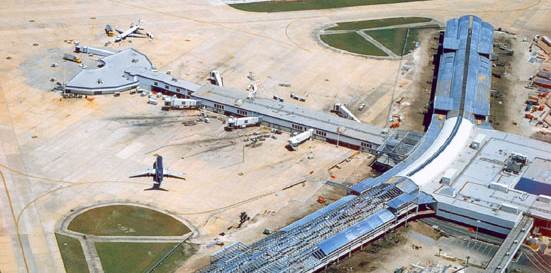5300 13 Taxiway Design Tool For High Speed Exits

As the aviation industry evolves, necessary changes to design standards and regulations are essential. The Federal Aviation Administration (FAA) publishes these guidelines in documents known as advisory circulars (ACs). These documents are used to ensure a high level of safety and efficiency in all aspects of the airport system. One area of the airport system, airfield design, is the focus of AC 150/5300-13A: Airport Design, Change 1 (13A), dated September 2014. This AC is one of the more commonly used by aviation planning and engineering firms.
Most ACs are updated periodically to keep up with the changing dynamics of the industry, and AC 13A was due for a revision. In July 2020, the FAA released a draft version of AC 150/5300-13B: Airport Design (13B). A draft version is released to allow time for industry professionals to review and provide feedback to the FAA on the proposed changes. Let's look at some of the revisions proposed in the draft 13B and how they differ from 13A.
13B incorporates planning
A significant alteration is the integration of the planning process. The intent of 13A was to assist airport designers and engineers with the development of airfield improvements, whereas 13B provides additional guidance on airport planning and its relationship to airport design. Also, the FAA recently made changes to the United States Standard of Terminal Instrument Procedures 40:1 departure surface to give airports more flexibility with their existing airfield layouts. These changes can be found in FAA Engineering Brief No. 99A (EB 99A): Changes to Tables 3-2 and 3-4 of Advisory Circular 150/5300-13A, Airport Design. Draft 13B integrates the changes from 99A and updates from FAA Order 7110.65: Air Traffic Control, in relation to parallel runways.
Prior to 13A, industry professionals would design airfield pavement based on the critical aircraft's airplane design group (ADG). 13A introduced a taxiway fillet design methodology known as the taxiway design group (TDG), which used the dimensions of the aircraft's main gear width (MGW) and cockpit to main gear length (CMG) in lieu of the ADG's wingspan and tail height. The TDG ranged from 1 through 7, where 1 represented the smallest general aviation aircraft and increased to 7 for larger commercial aircraft. The TDG method was based on the maneuvering characteristics of the aircraft to reduce the amount of needed taxiway pavement. Draft 13B has removed TDG 7 and revised the MGW dimensions for TDGs 5 and 6. In addition, TDG 2 has been divided into TDGs 2A and 2B and includes additional fillet design dimensions.
Military facilities shift to municipalities
In the past, many airports served as military training facilities. As these airports were released to municipalities, they have had difficulties dealing with excess pavement and have limited the constraints on the airfield, because they no longer need to accommodate large military aircraft. Furthermore, the FAA rightfully has been overly conservative with the calculations of object-free areas in the past, protecting taxiing aircraft from collisions. Draft 13B has reduced the dimensions for taxiway object-free areas and taxiway separation requirements on Table 4-1. In addition, TDG 5 and 6 aircraft operate with a reduced taxiway edge safety margin, from 15 feet to 14 feet.
For further information on all the updates in draft 13B, visit the FAA's website for the document.
Jeff Alexander is an aviation planner in Hanson's Orlando, Florida, regional office. He can be reached at jalexander@hanson-inc.com.
5300 13 Taxiway Design Tool For High Speed Exits
Source: https://www.hanson-inc.com/hanson-blogs/ascend/Posts/2920/Ascend/2021/8/What-to-expect-with-changes-to-FAAs-advisory-circular-on-airport-design/ascend-post
Posted by: holzbargeres.blogspot.com

0 Response to "5300 13 Taxiway Design Tool For High Speed Exits"
Post a Comment